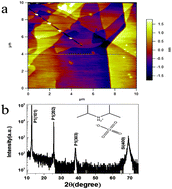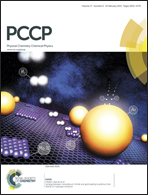Relaxation of ferroelectric thin films of diisopropylammonium perchlorate†
Abstract
Molecular ferroelectric thin films are highly desirable for their easy and environmentally friendly processing, light weight, and mechanical flexibility. A thin film of diisopropylammonium perchlorate (DIPAP) processed by a spin-coating method shows a good roughness and textured structure with (101) orientation in the ferroelectric phase with a space group of P1. Simultaneously, the thin film shows ferroelectricity and ferroelectric relaxivity above room temperature, which is completely different from crystals. These properties make DIPAP a candidate in sensing, data storage, electro-optics, and molecular/flexible electronics.



 Please wait while we load your content...
Please wait while we load your content...